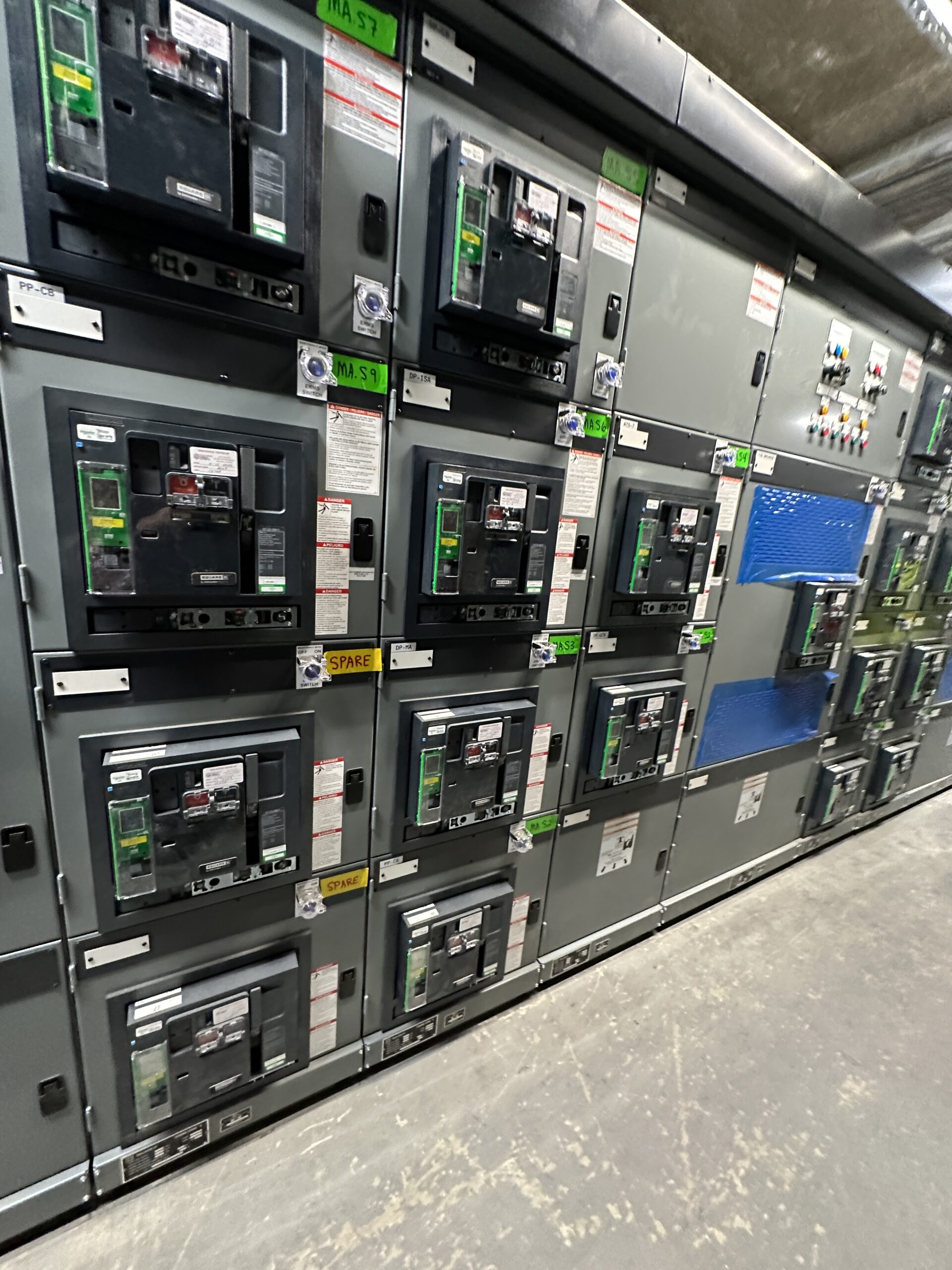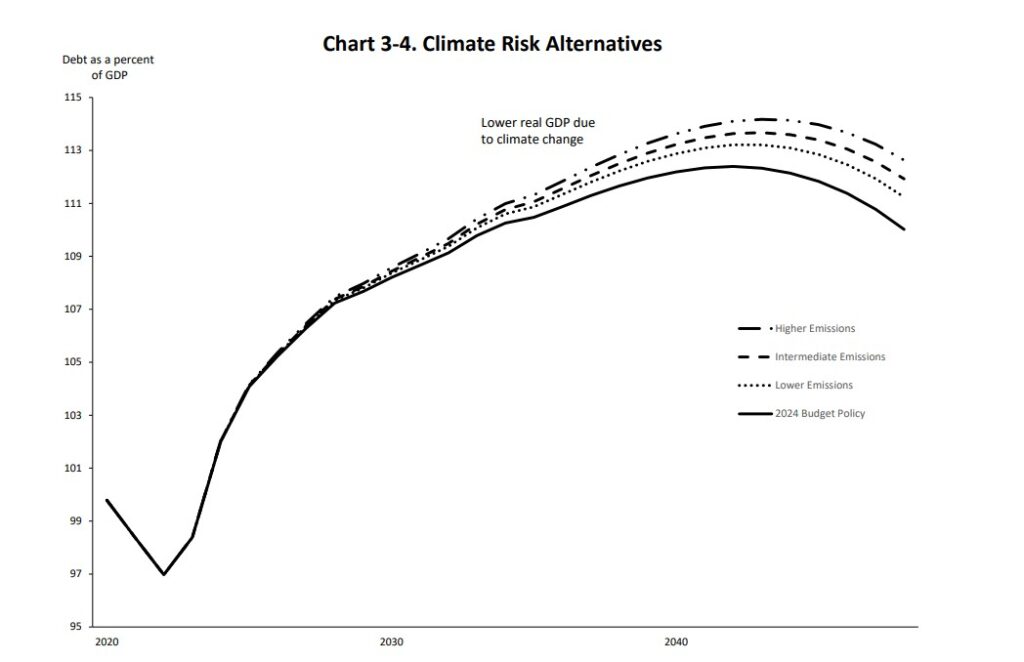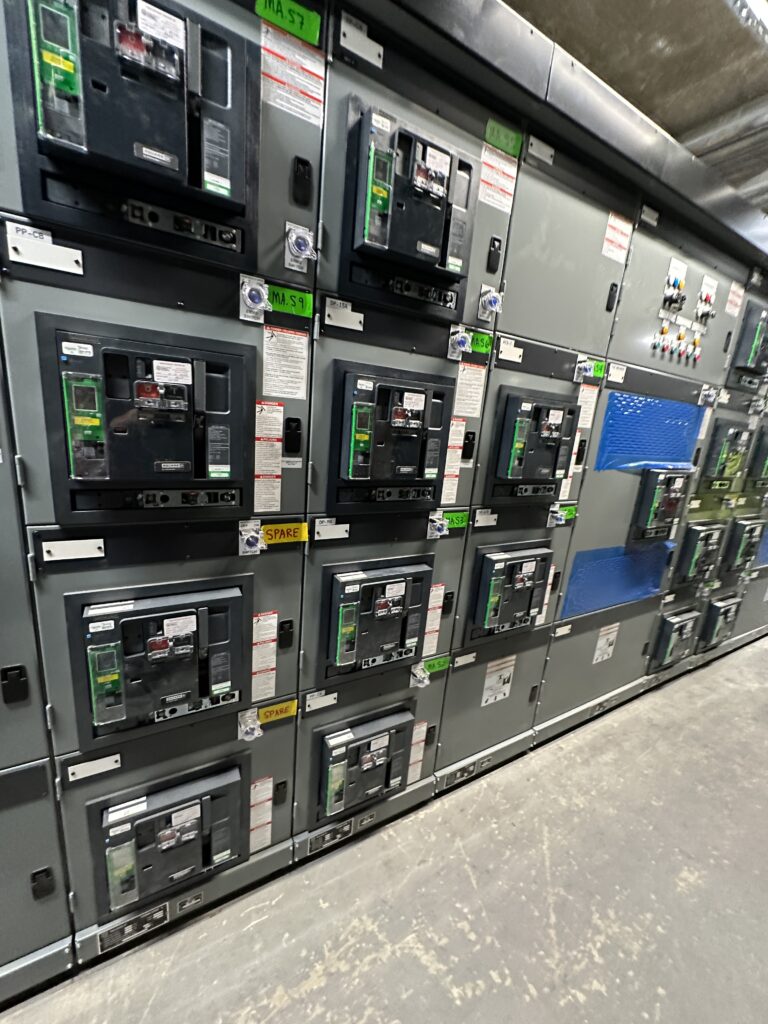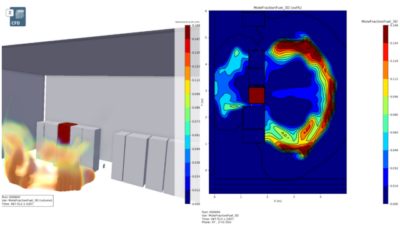Climate change poses significant financial and infrastructural risks to the U.S. economy, prompting debates over whether proactive decarbonization and resilience efforts are more cost-effective than maintaining the status quo.

Learning objectives
- Examine the financial risks of climate change and review of the role of decarbonization in addressing climate change.
- Review the current state of decarbonization legislation as it relates to the building construction industry. Review how building energy efficiency aligns with decarbonization efforts.
- Create a playbook framework for building decarbonization.
Decarbonization insights
- Improving decarbonization in buildings is a key strategy for meeting climate action goals, with federal incentives and local building performance standards driving reductions in carbon emissions.
- As climate change increases financial risk and strains infrastructure, investing in decarbonization efforts offers a proactive approach to stabilize systems and reduce long-term economic and environmental costs.
Much of the U.S. economy depends on the stability and predictability of the environment. For example, changing weather patterns can disrupt agricultural production, increase the quantity and severity of storms that can damage property, cause strain on aging utility infrastructure that wasn’t designed for extreme weather, etc.

Given the potential for these types of adverse outcomes, there’s a cost associated with a “business as usual” approach toward climate change. The question is how do you quantify that cost to decide if it is acceptable and by extension, if a proactive or reactive approach should be taken? Is proactive climate risk mitigation through decarbonization or resiliency efforts to adapt more effectively?
For fiscal year 2025, the Office of Management and Budget published a white paper titled, “The federal government’s budget exposure to financial risk due to climate change.” This paper provides macroeconomic assessments of the impact that climate change has on federal spending and revenue.
The expectation is that any increase in discretionary governmental spending to address physical risks (disaster relief, agriculture/flood insurance programs, infrastructure damage, etc.) must be offset by an associated increase in revenue (taxes) and/or decreases in funding for other discretionary federal budget line items (defense, transportation, veterans’ benefits, education, etc.).
Economic projections from the federal government comparing Biden-era federal decarbonization policy to “do nothing” scenarios have estimated a potential yearly impact of just under 3% of U.S. gross domestic product (GDP) by 2048 — over a trillion dollars per year. While climate change affects the entire U.S. economy, the socioeconomic groups that are most likely to be affected are typically the least able to afford the costs associated with adaptation to climate change.
Due to the current political climate, many individuals question the validity of government data. However, the insurance industry can offer additional independent insight. The expectation is that the insurance industry has a vested business interest in quantifying the risks associated with increased frequency and severity of weather events.
In 2022, there were approximately $275 billion in global economic losses from natural disaster events. Over the past 40 years, medium value ($1 billion to $5 billion) and high value (>$5 billion) loss events make up an ever-increasing percentage of overall losses. In the U.S. alone, there were 27 separate billion-dollar weather and climate related disasters.
Continuing urbanization and development in regions susceptible to severe weather (coastal regions, in flood plains, areas prone to drought and wildfire, etc.) make this worse. Insurance losses associated with natural catastrophes are predicted to grow 5% to 7% annually. Because of this, many insurers will opt to mitigate risk by raising premiums, reducing coverage or withdrawing altogether from markets that are highly susceptible to weather related disturbances.
Currently, an estimated one in 13 homeowners is uninsured. As insurance coverage becomes unaffordable or unavailable, this number will increase and put additional strain on governmental resources.
Energy models are not just for buildings
For a system to remain stable, inputs must equal outputs. Systems will try to self-stabilize by internally transferring energy from place to place. Engineers are keenly aware of this every time they perform a load calculation to determine equipment sizing. Anything that changes the amount of energy within a system and how quickly it can be dissipated from or transferred within that system has the potential to destabilize the system. This concept also applies to much larger systems, like Earth.
The planet has the capability to absorb and release carbon dioxide (CO2). This ability is known as the “carbon cycle.” The amount that is absorbed and released in this cycle every year is roughly 350 gigatons. The Energy Information Administration estimated that for energy related emissions in 2019, the United States emitted 5.13 gigatons compared to approximately 33 gigatons of overall global energy related emissions. These types manmade emissions can skew the carbon cycle and lead to an increased concentration of CO2 in the atmosphere.
CO2 is a greenhouse gas and can change how much thermal energy is dissipated from the planet. Although the global warming potential of CO2 on a per unit basis is significantly less than other gases, the sheer overall volume of CO2 emissions make it the single most impactful greenhouse gas. In general, a 10 parts per million (ppm) increase in atmospheric CO2 concentration equates to a mean global temperature increase of 0.1°C. Based on NOAA data, the concentration of CO2 in the atmosphere has steadily increased from roughly 316 ppm in 1958 to 424 ppm in 2024.
Returning to the energy model analogy, greenhouse gas emissions (GHGe) have increased the heating potential of the atmosphere by 1.11 watts per square meter since 1990. CO2 is responsible for about 78% of that increase. That additional energy is absorbed and dissipated through various mechanisms (weather patterns, melting of polar ice, etc.). Because of the potential impact of these trends, most climate change treaties and legislation now target CO2 emissions.
The process to decarbonization started long ago, you just haven’t noticed
Decarbonization has slowly progressed on the global, federal, state and local levels, but those efforts haven’t always been coordinated.
The nexus of most federal decarbonization policy was the 1997 Kyoto Protocol. The Kyoto Protocol was an international treaty where member countries committed to reducing global GHGe from 1990 baseline values. This treaty originally had 192 signatory countries.
However, it incorporated certain prescriptive requirements that resulted in significant backlash in many of those signatory countries. The primary contention was that an unequal top-down burden was placed on already industrialized countries, while exempting developing countries. Among the excluded developing countries were India and China, both of which had rapidly growing economies and dramatically increasing GHGe. As such, the governments of numerous signatories, including the United States, did not ratify the treaty.

While the U.S. did not ratify Kyoto, the Environmental Protection Agency did issue a determination in 2009 that reclassified CO2 and other GHGs as air pollutants that endangered public health and welfare by causing climate change and ocean acidification. As such are subject to regulation under the Clean Air Act. This reclassification power was afforded to the EPA under the concept of Chevron Deference.
The 2015 Paris Agreement superseded the Kyoto Protocol as the primary regulatory treaty for controlling climate change. The Paris Agreement’s stated goal was to limit global temperature rise to 1.5°C above pre-industrial levels compared to Kyoto’s target of a 2.0°C risk. The agreement addressed some of the concerns about Kyoto by expanded responsibilities to all signatory countries and allowing countries to have more self-determination in setting emission reduction targets.
Initial efforts by the U.S. federal government to meet the Paris targets were limited. The most prominent was provisions of the Inflation Reduction Act (IRA) of 2022, which provided funding and tax incentives for clean energy production, carbon capture and industrial decarbonization among others. Of significance to the building construction industry were tax incentives for increasing energy efficiency in various building systems by at least 25% beyond the ASHRAE Standard 90.1: Energy Standard for Buildings Except Low-Rise Residential Buildings baseline. Those incentives ranged from $0.54/square foot to $5.81/square foot. Ultimately, these incentives help promote adoption of energy-efficient technologies by making them more affordable and accessible.
Uncertainty will delay efforts to achieve any decarbonization goal
The executive branch’s stance on decarbonization has changed dramatically from between past and current administrations. Trump’s presidential administration withdrew from the Paris Agreement on two separate occasions (the Biden administration had rejoined after the first withdrawal).
In March 2025, the EPA in accordance with executive orders from the Trump administration has also announced the intent to rollback several established environmental policies related to carbon emissions. These policy changes could adversely impact discretionary programs that are subject to executive authority. A key example is EPA’s Energy Star program, which is integral component of many jurisdictions’ building performance standards (BPS) and benchmarking requirements.
However, certain statutory requirements, such as IRA tax incentives, are technically not subject to executive order. Consequently, the exact impact of these rollbacks is unclear.
Absent consistent guidance from the federal government, multiple states and local organizations have taken the initiative to further decarbonization efforts. For example, the U.S. Climate Alliance (USCA) represent a coalition of 24 governors committed to the 2015 Paris Climate Accords after the Trump administrations 2017 withdrawal. Ultimately, the USCA’s goal is to reduce GHGe 50% to 52% below 2005 levels by 2030 and achieve net-zero emissions no later than 2050. At this time, 24 different states and 257 local municipalities have adopted climate action plans.
Climate action plans are roadmaps that are intended define objectives for addressing climate change and typically include targets for reducing GHGe relative to emissions in a baseline year. However, the methods by which those goals are achieved or measured can vary significantly from jurisdiction to jurisdiction.
As they relate to building construction, the first step in implementation is developing benchmarking requirements to quantify current energy usage in building and establish baseline values. The step following benchmarking requirements is usually implementation of a BPS.

BPSs are local laws that require building to achieve reductions in carbon emissions by improving its electrical, gas and water efficiency. Typically, BPS requirements become stricter over time with a glidepath toward a 2040 or 2050 goal. With reduced guidance from the current federal administration, nongovernmental organizations such as the Institute for Market Transformation have developed BPS policy design, implementation and adoption frameworks. However, requirements still vary dramatically between the jurisdictions that have already adopted a BPS.
Disruption in the electrical utility business
Historically, energy usage and economic growth in the United States had shown a clear trend of decoupling from each other. In other words, increases in GDP have not resulted in a proportional increase in energy usage. This trend is typical of post-industrial economies where GDP is dominated by tertiary market sectors that are focused primarily on services (health care, finance, information technology, etc.) as opposed to energy intensive primary and secondary market sectors (mining, construction, manufacturing, etc.).
However, after 20 years of stagnation, electrical usage is once again on the rise in the United States. Federal Energy Regulatory Commission forecasted in 2023 filings a 4.7% electrical five-year demand increase compared to a previous estimate in 2022 of 2.6%. Peak demand is expected to grow in the U.S. by at least 38 gigawatts (GW) over the next five years. This growth has been driven primarily by data centers and the construction of new industrial facilities.
The reality is that because of deferred investment, the U.S. electrical grid is not prepared for this load growth. While the rate of connecting new loads to the grid is increasing, bringing new generation online can take significantly longer. Even if sufficient generation may exist in a particular geographic area, the transmission capacity to transfer power from one region to another may also be insufficient.
The inability to obtain electrical power has delayed many projects. It is expected that investment in the grid will eventually grow to meet demand. However, as expected in any market driven economy, electrical costs will increase in the meantime.
For example, PJM Interconnection, the electrical regional transmission organization responsible for all or parts of 13 different states, has a capacity auction to ensure that enough electrical generation is available to meet future demand. For the 2025/26 delivery year, the cost to consumers increased to $14.7 billion from the previous auction’s $2.2 billion. Compared to the previous auction year, there was approximately 6.6 GW less generation compared to an estimated 3 GW higher peak demand.

Decarbonization’s focus on electrification of buildings and transportation will further increase demand and make this situation worse. It is expected that any efforts to electrify buildings will not be easy. Wholesale replacement of gas fired equipment with electric will be unusually expensive. In many cases, this work will trigger other seemingly unrelated items such as electrical service upgrades, physical modifications to accommodate equipment that wasn’t originally present in the building, code updates to previously grandfathered installations, etc.
However, with increasing energy costs, energy conservation effort will become increasingly important in controlling a building’s operational costs. Depending on how much energy costs increase, certain fringe energy conservation measures may become economically viable based on an improved return on investment. In that scenario, it is expected that utilities will offer larger rebates to reduce grid demand which will further help offset those costs.
Decarbonization playbook for engineers
The expectation is that given the current political environment, guidance/support for decarbonization efforts from the federal government will be inconsistent for the immediate future. Even with this uncertainty, local governments may still forge ahead — albeit on indeterminate timelines. While efforts may be uncoordinated between various jurisdictions, it is expected that all will follow the same basic framework. The following are some basic steps to point you in the right direction.
Lay ground rules to determine if outcomes are successful
Engineers need to know what they are trying to achieve. Simply saying “decarbonization” is meaningless if you don’t know what you need to measure to determine if you’re successful. As such, understanding what metrics to use (energy use intensity, source/site greenhouse gas intensity) for that end goal is important.
If the local government has a climate action plan, reviewing its stated goals will be important. Following a nationally recognized standard with defined metrics like Energy Star is recommended if local government has not implemented benchmarking or BPS requirements. There are 18 broad categories within Energy Star that cover most, but not all building types.

Warning: While multiple jurisdictions across the country intend to adopt decarb legislation and/or a BPS, there appears to be little standardization. As such, what is required from place to place will vary. Every jurisdiction that has already passed decarbonization laws has had legal challenges from special interest groups which may change future requirements.
The basis of the challenge is typically a preemption argument — a local government cannot void or re-regulate existing federal requirements. The 1975 Energy Policy and Conservation Act is the federal legislation that is most referenced in preemption challenges. Although there may be nationally recognized decarb programs (Energy Star Nextgen) at some point in the future, those emerging programs are still in flux and there is no guarantee that they will be fully implemented or universally adopted.
In general, it appears that the most stringent end goal for most BPS’ will be “net zero” COe/carbon emissions by 2050. However, that is not guaranteed to be universal. For example, the Chicago Climate Action Plan’s stated goal is 62% overall GHGe reductions from 2017 baselines by 2040.
As part of this first step, you should discuss the goals and overall process described in the following steps with the client or building owner.
You can’t improve what you can’t measure. Develop a baseline
To measure your progress toward that eventual goal, you need to know where you’re starting from. Generally, this means knowing:
- Building usage, occupancy, size/floors, location. This information should harmonize with the Commercial Buildings Energy Consumption Survey (CBECS). Energy Star uses CBECS criteria, so it is a good starting point.
- Quantify past whole building energy usage. Determine if there is any documentation regarding past energy usage. Most common starting point for this information is Energy Star. For example, in Chicago or New York City, if the building is larger than 50,000 square feet, it was most likely required to comply with local benchmarking ordinances. If so, that ordinance required uploading utility info to Energy Star and the associated data should already be online on the city’s web portal. If the building does not have this documentation:
- Assemble utility bills (gas, electricity, water) for at least five years.
- Apply to Energy Star to consistently track this info going forward.
- What major systems in the building use natural gas or electricity?
- Although not needed as part of this step, it is also recommended that an energy model based on existing conditions be created. This will become important in the next step.
Determine how good or bad things are
Again, it appears that there will be little standardization regarding initial decarbonization and/or BPS requirements. However, it is likely that either initial benchmarking data for that building or performance compared to peer buildings will play a prominent role in measuring any type of progress. It is also likely that building systems that depend on fossil fuels (i.e., natural gas fire equipment) are the most likely things to be phased out as part of any decarbonization requirement.
While energy usage data was assembled in the earlier step, this step is focused on determining how far you are away from the end goal identified in step No. 1 compared to peer buildings. As part of this step, you should:

- Compare peer buildings using the metrics you selected as part of measurements. Again, Energy Star will do this for you based on CBECS data. While there are other valid sources of building energy performance data, such as DOE’s Building Performance Database, their usability varies and they can’t always provide a statistically representative sample of peer buildings.
- Determine rough order of magnitude energy usage associated with major systems in the building. The building’s fuel mix (kilowatts British thermal unit or kBtu electrical versus kBtu gas) will be important.
- If you completed an energy model, compare that model against the actual energy usage for the facility. There are multiple variable that can impact energy consumption in building — building population, occupancy patterns, weather, maintenance, etc. If there are significant deviations between actual and the model’s predicted energy consumption, it’s better to normalize those variables in the model early in the process. Having an accurate baseline model will be extremely useful in evaluating any proposed energy efficiency measures.
- Perform a property condition assessment to characterize the age, condition and configuration of the base building systems. This is especially important for any system that uses fossil fuels. Decarbonization will be a multi-year process and understanding the relative complexity and replacement costs of major buildings systems in comparison to their useful service life will be important for the owner in developing a long-term capital plan.
The basic goal of this step is to help the client accurately assess the relative energy performance of their building and how many of its systems are in play in any decarb effort.
Prioritize which systems should be first
From the earlier step, it should be apparent what systems are prime candidates for retrofit or replacement. As such, you should also be able to give the client a basic idea of relative costs versus its percentage of the building’s overall carbon dioxide equivalent (CO2e) emissions.
However, there are other considerations that may factor in deciding what upgrades/replacements should be performed first. For example, some systems such as old steam boilers may be problematic from an operations standpoint and take a disproportionate amount of labor to run properly. Conversions from pneumatic to direct digital controls may also provide benefits beyond energy usage in that the building engineers would be able to respond faster to tenant hot/cold calls. There should be an interview with the building operating engineers to discuss these types of considerations that aren’t necessarily reflected in the retrofit/replacement costs.

Even in modern all-electric buildings, there will still be decarbonization requirements. Most decarbonization legislation is also tied to utility electrical generation. Utility companies still have thermal generation assets (natural gas and coal-fired power plants), which won’t be retired for several years. As such, electrical usage has a carbon emissions component as well. Energy Star does estimate source CO2e emissions associated with the production of electrical power. Inefficient systems that use electricity should be targeted as well.
As a reference point for utility decarbonization efforts by state governments, Illinois’s CEJA legislation mandates decarbonization of the electrical generation industry by 2045. Because of the planned retirement of those thermal generation assets, PJM is forecasting an electrical capacity shortfall before 2030. This will most likely result in higher electricity prices and other ways to curb electrical demand as we get closer to that deadline.
While a reduction in a building’s electrical usage will have to happen at some point, it may be advisable to delay more costly retrofit/replacement projects that address electrical consumption until the increased cost of electricity/availability of incentives make it more advantageous from a business case. The expectation is that your client’s financial resources need to be managed carefully and that investing in affordable projects that have more immediate impact should be prioritized.
Note: When preparing an energy model as part of the earlier step, thermal envelope deficiencies (windows, insulation, etc.) may have been identified. Passive solutions that reduce energy usage are typically preferred because they offer more persistent savings. Many engineering firms do not have in-house capabilities to perform these building envelope evaluations. Partnering with a firm that has technical expertise in this field is advisable.
Optimize what you must buy time before making major changes
Decarbonization will not happen overnight. For older buildings, the costs associated with the replacement of major building systems will be prohibitive. While engineers may advise clients to be proactive and replace major pieces of equipment at the end of their useful service life, the reality is that equipment often remains in operation well beyond that timeframe simply because a funding source isn’t available to support the work.
Given that reality, energy efficiency considerations are relatively low on a client’s equipment replacement priorities unless incentives are available. It is unclear if/when government funds or a financing mechanism like PACE loans will be available to incentivize those energy efficiency/ decarbonization efforts. Until there is clarity about where the money will come from, the recommended course of action for the near term is to at least optimize the performance of existing systems. Retro-commissioning is often encouraged by local utility companies with rebates that can significantly offset implementation costs.

Ignoring all of these and taking a “wait and see” approach is unlikely to be viable. If the decarbonization legislation passed by New York City (local law 97) is any indication, any local decarbonization legislation has the potential to take the form of a carbon tax. Local law 97, for example, imposes a penalty of $268 per ton of CO2e for anything beyond a set annual emissions limit. That annual emissions limit will become progressively more stringent year over year until the final 2040/2050 end date is reached.




